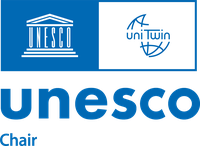Cadmium (Cd) is a significant public health concern. This heavy metal could cause kidney failure and cancer; hence, food safety authorities have regulated Cd content in food products, including chocolate. For thousands of rural residents, cacao, known as the chocolate tree, constitutes the main, if not the only, source of income. Therefore, Cd regulations threaten not only the principal source of income of an already vulnerable population but also their intangible cultural heritage assets. While strategies have been explored to mitigate Cd in agriculture, the current low adoption of technologies among cacao farmers in Colombia jeopardizes the effectiveness of the efforts to prevent negative consequences of the accumulation Cd in cacao beans. For this reason, understanding what factors influence adoption of agricultural practices addressing Cd accumulation in cacao becomes a priority goal of strategies making the cacao tree an engine for development. It is currently unknown if cacao farmers are willing to adopt agricultural practices, particularly those reported as beneficial for alleviating the Cd issue, nor its known how the regulation of this heavy metal influences such adoption decisions. This Ph.D. research project aims to fill this research gap and contribute to understanding the adoption of agricultural practices intending to tackle Cd in cacao crops. This research was conducted in the municipality of San Vicente de Chucuri in Santander, Colombia. San Vicente, known as the "Cacao Capital in Colombia," is the country's primary producer of cocoa beans. Due to its privileged location, the region offers cropland suitability to more than 3,000 families dependent on cacao for their livelihood. Notwithstanding the above, the region's potential could be threatened by elevated cadmium levels in the soils. iii iv Grounded theory was selected as the qualitative research methodology due to the lack of knowledge regarding the variables and variables relationships that intervene in the adoption of clonal cultivars and soil amendments, two critical innovations towards Cd alleviation. Two theoretical explanations, one for each innovation, were developed by following an iterative data collection and analysis process. The participants' descriptions provided the basis for developing the Soil Amendments Adoption Model (SAAM) and the Cacao Clones Adoption Model (CCAM), two models that describe the adoption of these innovations among cacao farmers from San Vicente de Chucuri. The models identify factors involved in adaptation of clonal cacao and soil amendments and provide a foundations for further research and, design and implementation of interventions using these technologies.
![]() Dissertation_Alejandro_Gil_-fv.pdf
— 3.6 MB
Dissertation_Alejandro_Gil_-fv.pdf
— 3.6 MB





